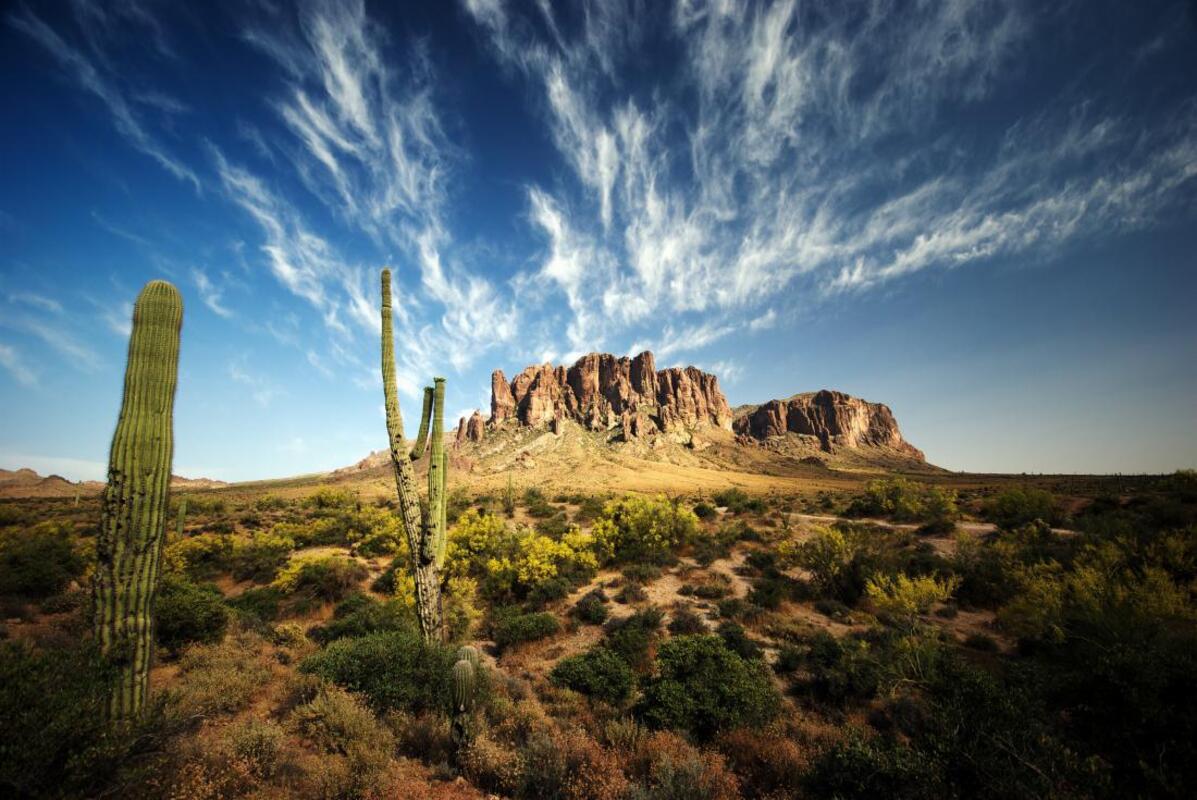Sonora is one of the most fascinating and least explored states of Mexico, located in the northwestern part of the country. Despite its arid climate, the region surprises with its rich nature, cultural heritage, and geographical diversity. This is where cactus-filled deserts, mountain ranges, beautiful beaches, and modern cities converge. If you want to learn more about this part of Mexico, discover these little-known and captivating facts about Sonora that you might not have known.
- Sonora is the second-largest state in Mexico by area, after Chihuahua. It covers more than 180,000 square kilometers, which is larger than countries like Greece or Uruguay. Because of this, distances between cities are significant, and climate conditions vary widely.
- The state capital is Hermosillo, often called the sunny city due to its more than 300 sunny days each year. The city is an important industrial, commercial, and educational hub of the region. It hosts numerous institutions of higher education, including the prestigious University of Sonora.
- A large portion of the state is covered by the Sonoran Desert, one of the largest and hottest deserts in North America. It is known for its impressive biodiversity, home to species such as the saguaro cactus, coyotes, rattlesnakes, and desert owls. Many of these species are endemic and found nowhere else on Earth.
- Sonora’s coastline lies along the Gulf of California, often referred to by Mexicans as the Sea of Cortez. This is one of the most biologically productive marine ecosystems in the world, inhabited by whales, dolphins, sea lions, and hundreds of fish species. The beaches of Puerto Peñasco and San Carlos attract tourists with their clear waters and scenic landscapes.
- Several Indigenous peoples live in Sonora, most notably the Seri, whose language is not related to any known linguistic family. Their culture preserves traditional fishing practices, handicrafts, and spiritual beliefs passed down through generations. Today, the Seri people continue to balance tradition with the challenges of modern life.
- One of the most important industries in the state is automobile manufacturing. Hermosillo is home to a major Ford plant where vehicles for the North American market are assembled. This factory is one of the largest employers in the region and a driver of technological growth.
- Agriculture is well developed in Sonora, particularly wheat cultivation, cattle ranching, and fruit production. The state is one of Mexico’s leading exporters of beef, thanks to its climate and vast grazing lands. Local cuisine is rich in meat-based dishes, with the famous Sonoran carne asada being a regional favorite.
- Sonora also plays a key role in Mexico’s mining sector. It is a source of copper, silver, gold, and other valuable minerals. The Cananea mine, located in the state, is one of the largest open-pit copper mines in the world.
- The musical genre known as narco-music or narcocorrido originated in Sonora. This genre combines traditional corrido melodies with narratives about border life, smuggling, and social drama. It has gained popularity not only in Mexico but also among Mexican communities in the United States.
- The state is home to El Pinacate biosphere reserve, a UNESCO-listed national park. Its unique geological formations, rare bird and reptile species, and volcanic landscapes attract eco-tourists from around the world. It is considered one of the best places in Mexico for observing wildlife.
- Sonora shares a border with the US state of Arizona, making it a crucial region for trade and migration. Border crossings like Nogales see thousands of people and goods move daily. The border cities reflect a blend of Mexican and American cultures.
- Culturally, Sonora is known for its distinctive cuisine, which merges desert ingredients, seafood, and Indigenous traditions. Popular dishes include borracho stew, goat tamales, and salted fish. Its culinary richness is increasingly drawing the attention of food travelers.
- Sonora is one of Mexico’s most sparsely populated states despite its vast territory. Most of its population is concentrated in a few urban centers, while large parts of the state remain scarcely inhabited. This creates a sense of wide open space, silence, and closeness to nature.
- Many festivals are celebrated across the state, the most famous being the Guaymas Carnival. This vibrant event includes parades, music, masks, and fireworks, attracting tens of thousands of visitors each year. The festival showcases the joyful and welcoming spirit of the people of Sonora.
- It is noteworthy that the first female governor in Mexican history, Alicia Arellano Tapia, came from Sonora. She served temporarily in the mid-20th century and helped pave the way for women’s participation in national politics. Her name is associated with social progress in Mexico.
We hope that these incredible and informative facts about the state of Sonora have offered you a fresh perspective on this part of Mexico. The state is impressive not only for its natural wonders but also for its cultural depth, rich traditions, and dynamic modern development. Learning such engaging facts reminds us that even the lesser-known corners of the world can hold true treasures of nature and history.





